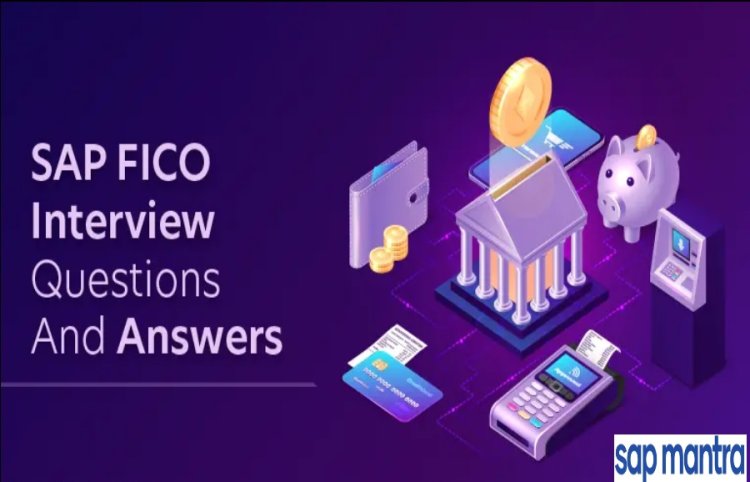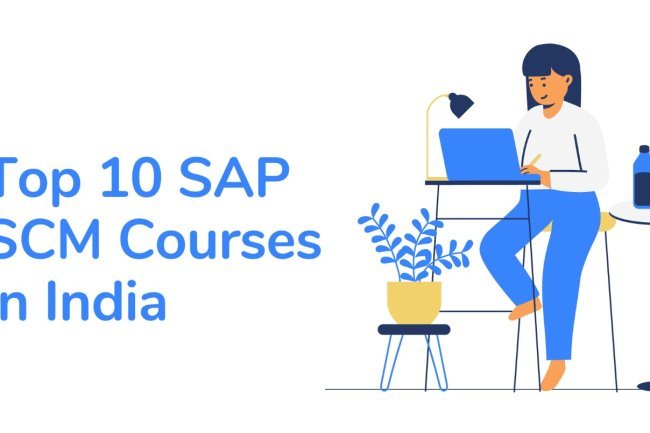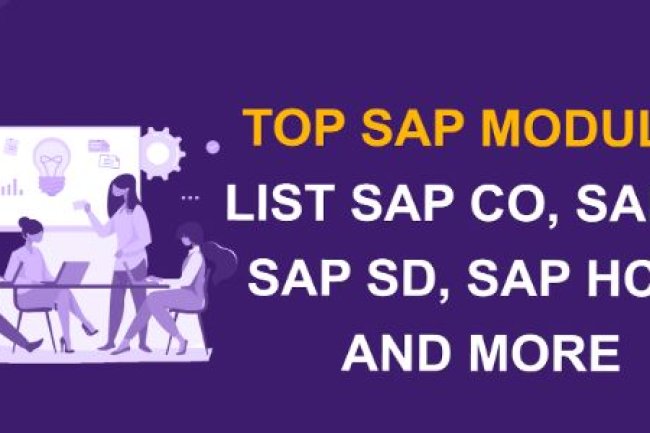SAP Finance Interview Questions (Best 30) – On Global Settings, GL & More.
Top 30 SAP FICO Interview Questions & Answers

SAP Finance interview Questions are vital to performing best in your FICO interviews. These questions guide you through your interview preparation. Additionally, they help you to work through real-time issues you would face during your consultant job.
Following are the SAP Finance interview questions that majorly cover questions on Global Settings and some on General Ledger.
SAP Finance Interview Questions on Global Settings, GL & More.
The key topics herein are:-
- Company Code
- Fiscal Year
- GL Accounting
- Document Clearing
- A/R & A/P and
- Asset Accounting
Let us move ahead with these SAP Finance Interview questions.
SAP Finance Interview Questions on Company Code.
Q.1- What is the relation between a Controlling Area and a Company Code?
A controlling area can have the following two types of relationships with a company code.
- Single Company code relation
- Cross Company code relation
It means that you can assign one single controlling area to several different company codes. Also, Controlling can have a 1:1 or 1:many relationship with different company codes.
The Controlling Area is the umbrella which stores all controlling activities. Such as:-
- Cost Center Accounting
- Product Costing
- Profit Center and
- Profitability Analysis.
Likewise, Company Codes are the umbrella for Finance activities.
Q-2- Is the Business area at the company code level?
No, the Business area is at the client level. It means other company codes can also post to the same business area.
Q-3- In the Customizing setting, “Company code Productive” means what?
Once the company code is live, this check box helps prevent the deletion of many programs accidentally. It is activated just before going live.
Q-4- If there are two company codes with different charts of accounts, how can you consolidate their activities?
In this case, you either need to write an ANAP program or implement the special Consolidation Module of SAP. If both the company codes use the same chart of accounts, then standard SAP reports give you the consolidated figure.
SAP Finance Interview Questions on Fiscal Year.
Q-5- What are the options in SAP when it comes to Fiscal Years?
The fiscal year is nothing but the way the system stores financial data. You have 12 periods in SAP and also four special periods. Fiscal Year Variant stores all of them.
There are two types of Fiscal Year Variant
- Calendar Year- Jan-Dec
- Non-Calendar- April-March
- Year Dependent Fiscal Year
Q-6- What is a year-dependent Fiscal Year Variant?
In a Year dependent fiscal year variant, the number of days in a month is not as per the calendar month. Let us take an example.For the year 2005 the period January ends on the 29th, Feb ends on the 27th, and March ends on the 29. While for the year 2006 January ends on 30th, Feb ends on 26th March ends on 30th. This applies to many countries, especially the USA.Consequently, we need to configure this fiscal year variant every year.
Q-7- How does posting happen in Material Management during special periods?
There is no posting which happens from MM (Material Management) in special periods. Special periods are only applicable for the SAP FI module. We require them to make any additional posting such as closing entries, and provisions. These happen during quarter or year-end.
SAP Finance Interview Questions on GL Accounting.
One of the most important SAP Finance interview questions in GL is related to Business Area. One such is below.
(Important): Q-8- What are the different scenarios under which we may define a Business Area or a profit center?
This question is usually very disputable. We create both Business areas and Profit Centers for internal reporting. Each has its pros and Cons. But many companies nowadays go for Profit center. The reason is that they feel that SAP may not support business area enhancements in future versions.There are typical month-end procedures which we need to execute for both of them. At the same time, many times reconciliation might become a big issue. A typical challenge in both of them is that you may not know the Business Area or Profit Center of the transaction at the time of posting.
Q-9- Give some examples of GL accounts that the system should post automatically. How is this defined in the system?
Stock and Consumption accounts are instances of GL accounts that the system should post automatically. Then, we need to select the checkbox “ Post Automatically Only” in the GL account master record.
Q-10- Is it possible to maintain plant-wise different GL codes?
We should activate first the valuation group code. The valuation grouping code is maintained per plant and is configured in the MM module. Further, we should maintain the Account code per valuation grouping code after doing this configuration.
Q-11- What is a field status group?
Field status groups control the fields which come up when the user does the transactions. The options available are one can have the fields only for display, suppress them, or make them mandatory. So there are three options. FIGL Master stores the field status group.
SAP Finance Interview questions on Document Clearing.
Q-12- What are the Customizing prerequisites for document clearing?
We must manage the Account on the open item management. This tick is in the General Ledger Master Record called the Open Item Management. It helps to manage your accounts in terms of cleared and uncleared items. A typical example is GR/IR Account in SAP.
Q-13- Explain the importance of the GR/IR clearing account.
GR/IR is an interim account. In the legacy system, if you receive the goods but not the invoice, we make a provision in SAP at the Goods receipt. It passes the accounting entry debiting the Inventory and crediting the GR/IR Account.Subsequently, when we receive an invoice, the system debits this GR/IR account and credits the vendor account. That way till the time that we don’t receive the invoice, the system shows the GR/IR as uncleared items.
SAP Finance Interview questions on AR/AP.
Q-14- At what level are the customer and vendor codes stored in SAP?
The customer and vendor codes are at the client level. That means any company code can use the customer and vendor code by exiting the company code view.
Q-15- How do you make Vendor Invoice Payments?
We can make Vendor invoice payments in the following manner,
- Manual payments without the use of any output medium, like cheques etc.
- Automatic payment program through cheques, Wire Transfer DME etc.
Q-16- How do you configure the Automatic Payment Program?
The following are the steps for configuring the Automatic Payment Program
Step-1
- Company Code for the payment transaction
- Define sending and paying company code
- Tolerance days for payable
- Minimum % for cash discount
- Maximum Cash discount
- Special GL Transaction to be paid
Step-2
- Paying company code for the payment transaction
- The minimum amount for outgoing payment
- No Exchange rate diff
- Separate payment for each ref
- Bill/exchange payment
- Form for payment advice
Step-3
- Payment method per country
- Whether Outgoing payment
- Check or bank transfer or B/E
- Whether allowed for personnel payment
- Required master data
- Doc Types
- Payment medium programs
- Currencies allowed
Step-4
- Payment method per company code for payment transactions
- Setup per payment method and co code
- The minimum and maximum amount
- Whether payment per due day
- Bank Optimization by bank group or by postal code or no optimization
- Whether Foreign currency allowed
- Customer/Vendor Bank abroad allowed
- Attach the payment form check
- Whether payment advice required
Step-5
- Bank Determination for the payment transaction
- Rank the house banks as per – Payment method, and currency and give them ranking numbers
- Setup house bank sub-account (GL Code)
- Available amounts for each bank
- House bank, account id, currency, the available amount
- Value date specification
Q-17- Where do you attach the check payment form?
It is attached to the payment method per the company code.
Q-18- Payment terms for customer master can be maintained at two places i.e accounting view and sales view. Which payment term gets defaulted in a transaction?
The payment term in the accounting view of the customer master comes into the picture if the transaction originates from the FI module. If we post an FI invoice (FB70) to a customer, then the payment term defaults from the accounting view of the customer master.While the payment term in the sales view of the customer master comes into the picture if the transaction originates from the SD module. A sales order is created in the SD module. Thus, the payment terms default in the sales order from the sales view of the customer master.
Q-19- Payment terms for the vendor master can be maintained at two places i.e accounting view and the purchasing view. Which does the payment term default in transactions
The payment term in the accounting view of the vendor master comes into the picture if the transaction originates from the FI module. If we post an FI invoice (FB60) to the vendor, then the payment terms have defaulted from the accounting view of the vendor master.While the payment term in the purchasing view of the vendor master comes into the picture if the transaction originates from the MM module. A purchase order is created in the SD module. Thus, the payment terms have defaulted in the purchase order from the purchasing view of the vendor master.
Q-20- Explain the entire process of Invoice verification from GR to Invoice verification in SAP with accounting entries.
We prepare receipts in SAP for purchased material to refer to a purchase order.
When we post goods receipt in SAP, the accounting entry passed:-
- Inventory account Debit
- GR/IR account credit
A GR/IR is a provision account which provides for liability for the purchase. The rates for the valuation of the material are picked up from the purchase order.
When the invoice is booked in the system through Logistics invoice verification the entry is,
- GR/IR account Debit
- Vendor Credit
Q-21 – How do we define Tolerance for Invoice Verification?
The following are instances of tolerance that we can define for Logistic Invoice Verification
- Difference
- Moving Average Price Variance
- Price Variance
Based on the client’s requirement, the transaction can be “Blocked” or posted with a “Warning” in the event of the Tolerance being exceeded.Tolerance is nothing but the differences between invoice amount and payment amount or differences between goods receipt amount and invoice amount which is acceptable to the client.
Q-22- Can we change the recon account in the vendor master if so and how? What is the impact on the old balance?
The reconciliation account can be changed in the vendor master provided that authority to change has been configured. Also, any change you make to the reconciliation account is prospective and not retrospective. The old items and balances do not reflect the new account only the new transactions reflect the account.
SAP Finance Interview questions on Asset accounting.
Q.23- What are the organizational assignments in asset accounting?
Chart of depreciation is the highest node in Asset Accounting and this is assigned to the company code.Under the chart of depreciation, all the depreciation calculation is stored
Q.24- Explain the importance of asset classes. What asset classes are there?
The asset class is the main criterion for classifying assets. Every asset must be assigned to only one asset class. Examples of asset classes are Plant and Machinery, Furniture & fixtures, computers etc. The asset class also contains the GL accounts which are debited when any asset is procured. It also contains the G/L accounts which are debited when any asset is procured. It also contains for depreciation calculation, scrapping etcWhenever you create an asset master you need to maintain the asset class for which you are creating the required asset. In this manner whenever any asset transaction happens the GL accounts attached to the asset class are automatically picked up and the entry passed.You can also specify certain control parameters and default values for depreciation calculation and other master data in each asset class.
Q.25- How does the system define depreciation Key?
We need to enter the specification and parameters in the Calculation methods that the system requires to calculate depreciation amounts. Calculation methods replace the internal calculation key of the depreciation key. Depreciation keys default in Asset Master from the asset class. Refer to the configuration for more details of how depreciation is calculated.
Q.26- What steps do you have to consider to ensure that integration into the general ledger for the depreciation posting run works?
For each depreciation area and company, the code specifies the following:-
- The frequency of posting depreciation (monthly, quarterly etc.)
- CO account assignment (cost centre)
- For each company code, you must define a document type for automatic depreciation posting only. This document type requires its external number range.
- You also need to specify the accounts for postings (Account Determination).
- To ensure consistency between Asset Accounting and Financial Accounting, you must process the batch input session created by the posting report
- If you fail to process the batch input session an error message will appear at the next posting run. The depreciation calculation is a month-end process which runs in batches. Further, once the batch input runs, the system posts the accounting entries into Finance.
Q.27- Is it possible to have depreciation calculated for the day?
Yes, it is possible. You need to switch on the indicator Depreciation to the day in the deprecation key configuration.
Q.28- Is it possible to configure that no capitalization be posted in the subsequent years?
Yes, it is possible. You need to set it in the depreciation key configuration.
Q.29- How are Capital WIP and Assets accounted for in SAP?
We refer Capital WIP to as Asset under Construction in SAP and represent it by a specific Asset Class. Usually, the system does not change depreciation on Capital WIP.We can book all costs incurred on building a capital asset to an Internal Order and through the settlement. Further, we can post the procedure onto an Asset Under Construction. Subsequently, on the actual readiness of the Asset for commercial production, the Asset Under Construction gets capitalized to an actual asset.
Q.30- What is the purpose of defining Internal Orders?
We use Internal Orders for tracking costs.These usually incur on a short-term basis and time tracking is not of much essence. Example Advertisement Campaign, Sales Promotion expenses etc.
What did you learn in these SAP Finance Interview Questions?
So,in this article, I have covered interview questions majorly on Company Codes, Fiscal Year, GL Accounting, Document clearing, A/R & A/P and Asset Accounting.I am sure these questions will help you to achieve complete learning for you to build a strong SAP FICO Career. And also help you prepare best for your FICO interviews.
(AASHIT SRIVASTAVA)
What's Your Reaction?













![Top SAP Modules list in 2023 [SAP FI, SAP CO, SAP SD, SAP HCM, and More]](https://sapmantra.com/blog/uploads/images/202304/image_100x75_6443f437cc02a.jpg)








